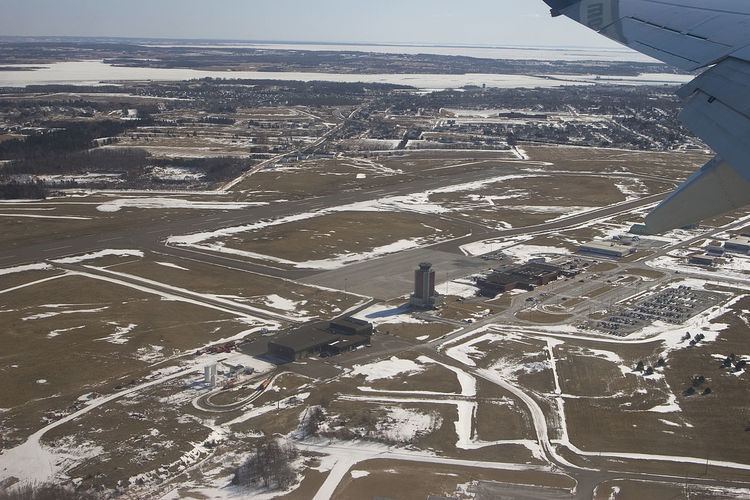Airport type Public Elevation AMSL 159 ft / 48 m Elevation 49 m | Code YYG Phone +1 902-566-7997 | |
 | ||
Address 250 Maple Hills Ave, Charlottetown, PE C1C 1N2, Canada Profiles | ||
Canada pei charlottetown airport walkthrough
Charlottetown Airport, (IATA: YYG, ICAO: CYYG), is located 3 nautical miles (5.6 km; 3.5 mi) north of Charlottetown, Prince Edward Island, Canada. The airport is currently run by the Charlottetown Airport Authority, is owned by Transport Canada and forms part of the National Airports System.
Contents
- Canada pei charlottetown airport walkthrough
- The charlottetown airport
- Upton Field
- Municipal ownership and operation
- Military operation
- Federal ownership and operation
- Charlottetown Airport Authority
- References
The airport is classified as an airport of entry by NAV CANADA and is staffed by the Canada Border Services Agency. CBSA officers at this airport can handle aircraft with no more than 60 passengers or 368 if off-loaded in stages.
The charlottetown airport
Upton Field
The first aircraft to operate in the Charlottetown area was one that landed at the exhibition grounds east of the city's central business district in 1912; it was not until 1931 that a permanent airfield was built. The first facility was known as Upton Field (later Upton Airport) and consisted of two turf runways 2,800 ft (850 m) and 1,600 ft (490 m) respectively, opening on January 16, 1932. Upton was a farming community located in the western part of Queens Royalty, northwest of the city proper. The airfield was leased to Canadian Airways Limited from October 9, 1932 to October 9, 1938, although the airfield was only licensed until June 30, 1938.
Throughout this time, Upton Airport received the first air mail service in Canada. Today the site is farmland and trees, and local residents are opposed to a proposed plan to develop the residential subdivisions in the area. It is a popular area for the walking of dogs, hiking, cross country skiing, and other recreational activities.
Municipal ownership and operation
In June 1938 the city government asked the Department of Transport to assist in the development of an expanded municipal airport. Upton Airport was considered a candidate, as was a 300-acre (1.2 km2) property east of Sherwood Station on the Brackley Point Road. Upton Airport was rejected due to lack of space and the Sherwood Station property in the central part of Charlottetown Royalty was purchased by the city government for $30,000. The provincial government contributed 50% to the development of the new airport in exchange for 50% of its profits while the city would operate it.
Military operation
In December 1939 the city government offered the airport to the federal government for military use through the duration of World War II. The Royal Canadian Air Force expanded the airport and enlarged the runways in preparation for using the airport to train pilots and aircrew. The runways were altered into a classic triangle configuration seen with most British Commonwealth Air Training Plan aerodromes across Canada. The Royal Air Force used the airfield from June 15, 1941 until February 1944 during which time it was known as RAF Station Charlottetown. Following the departure of the RAF, the RCAF established training units at the airfield, which was renamed RCAF Station Charlottetown.
Federal ownership and operation
Following the end of World War II, the military presence at the airport diminished by late 1945 and the base was decommissioned and transferred from the RCAF to the federal Department of Transport on February 1, 1946, returning the airfield to civilian use.
Several expansions were subsequently undertaken, including an enlarged civilian air terminal off the Brackley Point Road on the west side of the airfield, as well as a lengthening and realigning of what would become runway 03/21 during the 1960s-1970s to accommodate jet aircraft. A major expansion during the 1980s saw the old terminal become a general aviation facility after a new terminal, control tower and emergency services building were constructed further to the north from a continuation of the Sherwood Road. This also saw runway 03/21 lengthened to its current configuration.
Charlottetown Airport saw extensive service during the 1960s-1990s from both Air Canada and Eastern Provincial Airways to destinations in Atlantic and Central Canada. Following EPA's sale and merger with CP Air, Charlottetown Airport saw direct CP Air service from Central Canada for several years, continued by Canadian. The creation of Air Canada subsidiary Air Nova and Canadian subsidiary Air Atlantic saw the beginning of a downgrade in direct service by the major carriers from Central Canada and an increase in service from hub airports such as Halifax and Moncton.
The opening of the Confederation Bridge in 1997 coupled with capacity improvements at Moncton and Halifax airports saw many changes to air traffic through Charlottetown.
Charlottetown Airport Authority
On February 28, 1999 the Department of Transport transferred operational and financial responsibility for the Charlottetown Airport to the Charlottetown Airport Authority under a 60-year lease arrangement; the federal government through DOT remains the owner of the property.
Since the turn of the millennium, and especially since the mid-2000s, Charlottetown Airport has seen a great increase in flights. The trend started when Air Canada introduced non-stop flights to Montreal-Trudeau Airport from Charlottetown after the acquisition of Canadian Airlines. Later, JetsGo, a now defunct low-cost Canadian carrier, also introduced non-stop flights to Charlottetown in early 2003. The flights didn't last long, as JetsGo declared bankruptcy and shut down in March 2005.
With the recent completion of a $2.1 million expansion that includes customs facilities, Delta Air Lines had added flights to Charlottetown from New York. As well, work has been completed to expand the main terminal's apron to accommodate more scheduled flights on the ground at the same time.
